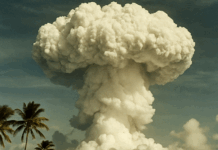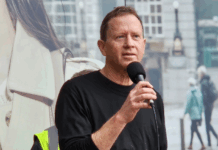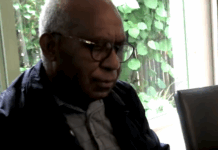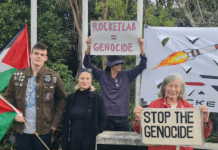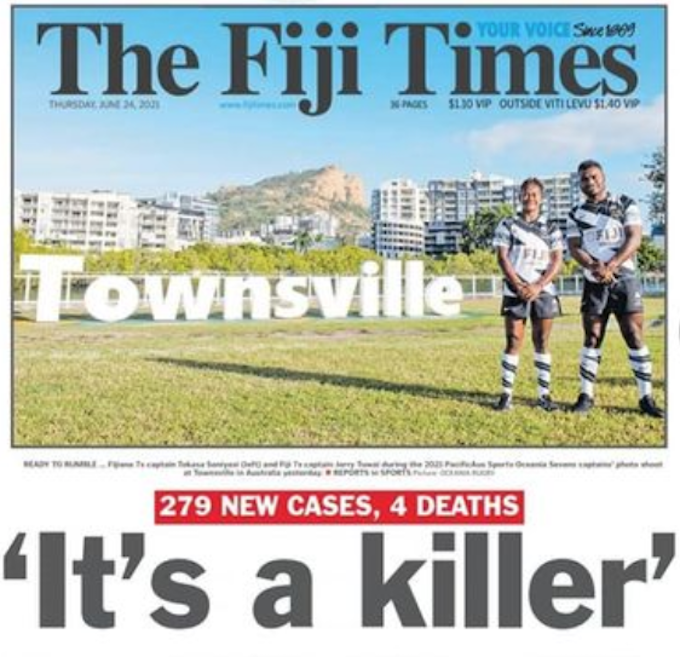
By Michael Field of The Pacific Newsroom
Fiji could face around 600 covid-19 deaths within about eight weeks, and 50,000 active cases, unless decisive government-led action is taken quickly on controlling the epidemic.
Diplomatic sources have told Pacific Newsroom that increasing alarm in Australia and New Zealand has prompted their Suva diplomats to urge Prime Minister Voreqe Bainimarama to institute a month-long hard lockdown across Fiji.
He and his associate, Aiyaz Sayed-Khaiyum, are refusing, claiming it will inflict severe economic damage.
- READ MORE: ‘It’s a killer’ – 279 cases and four deaths
- Covid infections in Fiji soar with record 279 cases – four deaths
- Civil unrest and political instability threaten Fiji as covid-19 outbreak takes hold
- Other Fiji covid pandemic crisis reports
But that may be happening anyway and international aid bodies are quietly preparing for food shipments into Fiji, akin to cyclone relief.
The looming covid disaster could be the largest public health crisis since the New Zealand ship Talune introduced H1N1 influenza into Suva in 1918, resulting in around 9000 deaths in a month or six percent of the population.
Global models
Since April 10, when covid Delta arrived in Fiji from India, via Singapore, its growth track has followed the global models.
Government leaders knew what was coming, as Fiji’s Medical Services’ Head of Health Protection, Dr Aalisha Sahukhan, spelt out on June 23: “Today we have reported a record number of cases, and this has been happening regularly over the last week.
“And the daily case numbers will only increase. What we warned would happen when this outbreak started around two months ago is happening.”
The comment plainly implies that the mathematical warnings were not listened to.
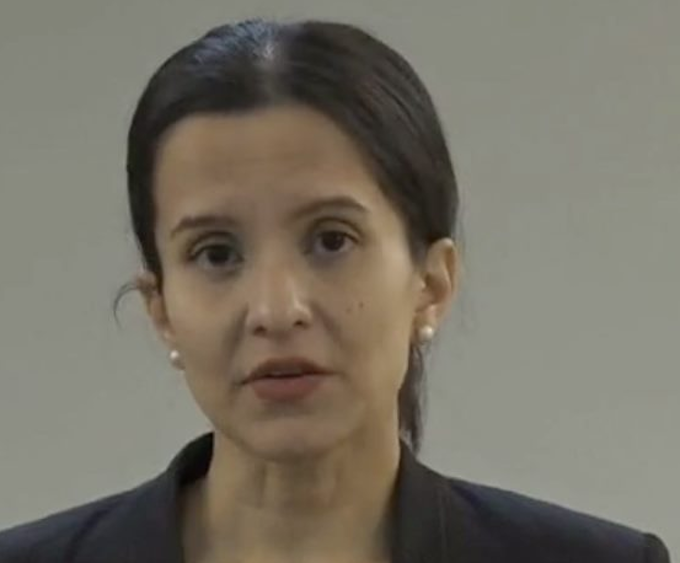
She was speaking as they reported 279 new cases of covid, taking the number of active cases to 2479.
Active cases are, data shows, doubling every seven to eight days.
The existing numbers, combined with the global experience, point to Fiji in early August having had 600 deaths and over 50,000 active cases.
When speaking on Wednesday, Sahukhan said there had been 13 deaths due to covid-19 in Fiji, with 11 of these deaths during the outbreak that started in April.
Infection rate
She noted that the daily test positivity rate in Fiji had reached 4.9 percent. This rate measures the number of positive covid results for every 100 tests.
It shows how well a country is testing and, taken with the number of confirmed cases, aids in understanding community spread.
“We are just 0.1 percent below the 5 percent [World Health Organisation] threshold that indicates widespread community transmission,” she said.
Dr Sahukhan said Fiji authorities were working on mathematical modelling to project how big the epidemic would be.
“India at the peak of the outbreak that happened in May went to 280 cases per million population per day, the United Kingdom at the peak of their outbreak was at over 800 per million population per day,” she said.
“Right now we are at 187 cases per million population per day, which is 166 cases per day.
“If our daily cases rise to a peak similar to the UK, we should expect approximately 700 cases per day at a 7-day average.”
She said they had to worry about the severe cases that required hospitalisation and deaths.
“As the cases have risen, it has largely overwhelmed our contact tracing capacity in the Lami-Suva-Nausori zone.
“This has happened in every other country that has faced this number of cases relative to their population.”

Next wave
What comes next, the next wave, was most concerning.
“The wave of people with severe illness requiring hospitalisation and the deaths that will come with it,” she said.
“We have just started to see the beginning of that wave now.”
The wave would crash on to medical facilities.
“Our hospitals are not overwhelmed.”
But as they fill with covid patients, other sick people would not get care.
“We have seen this happen in other countries.”
Behind the scenes Fiji’s problem is being made worse by the appalling rates in frontline workers.
Nearly half of the Navy now has covid, for example. Large clusters are occurring among police stations and units.
Many frontline workers are known to be wearing their protective gear wrongly, and many believe their first dose of vaccine is offering protection from covid when it is not.
Fiji data follows others
Statistical data seen by government officials and Pacific Newsroom are showing that Fiji’s covid growth is accurately following pathways set by other countries. For local Fiji reasons — from villages spread on Viti Levu to island scattering — the situation may be worse.

These factors, Fiji officials are being told, is also why covid will not achieve vaccine inspired herd immunity in Fiji.
Population density could leave Fiji with chronic covid for years to come.
Making matters worse is the way covid has forced the closure of facilities at various times.
These include the Colonial War Memorial Hospital (CWMH), the Queen Elizabeth Barracks (which was providing frontline troops), naval vessels and the Ministry of Health Incident Management Team and warehouse.
Other hospitals and health centres hit include those at Valelevu, Raiwaqa, Makoi, Kamikamica and Nadi.
Republished from The Pacific Newsroom with permission.


